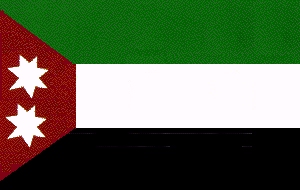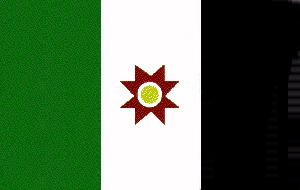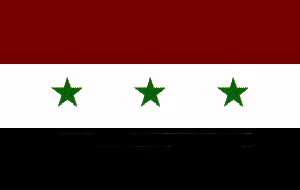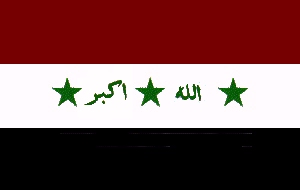Facts > Politics
Country name
conventional long form Republic of Iraq
conventional short form Iraq
local short form Al Iraq
local long form Al Jumhuriyah al Iraqiyah
Government type
In transition following April 2003 defeat of Saddam Husayn regime by
US-led coalition
Capital
Baghdad
Administrative divisions
18 governorates (muhafazat, singular -
muhafazah); Al Anbar, Al Basrah, Al Muthanna, Al Qadisiyah, An Najaf,
Arbil, As Sulaymaniyah, At Ta'mim, Babil, Baghdad, Dahuk, Dhi Qar, Diyala,
Karbala', Maysan, Ninawa, Salah ad Din, Wasit
Independence
3 October 1932 (from
League of Nations mandate under
British administration)
National holiday
It was 17 July ( Revolution day 1968)
prior to April 2003,Yet to be replaced by another date.
Constitution
In transition following April 2003 defeat of Saddam Husayn regime by
US-led coalition
Legal system
In transition following April 2003 defeat of Saddam Husayn regime by
US-led coalition
Suffrage
Formerly 18 years of age; universal; in transition following April
2003 defeat of Saddam Husayn regime by US-led coalition
Executive branch
chief of state in
transition following April 2003 defeat of
Saddam Husayn regime by US-led coalition
Legislative branch
In transition following April 2003 defeat of Saddam Husayn regime by
US-led coalition
Judicial branch
In transition following April 2003 defeat of
Saddam Husayn regime by
US-led coalition
Political parties and leaders
In transition following April 2003 defeat of Saddam Husayn regime by
US-led coalition
Political pressure groups and leaders
In transition following April 2003 defeat of
Saddam Husayn regime by
US-led coalition
International organization participation
ABEDA, ACC, AFESD, AL, AMF, CAEU, CCC,
EAPC, ESCWA, FAO, G-19, G-77, IAEA, IBRD, ICAO, ICRM, IDA, IDB, IFAD, IFC,
IFRCS, ILO, IMF, IMO, Interpol, IOC, ISO, ITU, NAM, OAPEC, OIC, OPEC, PCA,
UN, UNCTAD, UNESCO, UNIDO, UPU, WFTU, WHO, WIPO, WMO, WtoO
Diplomatic representation in the US
In transition following April 2003 defeat of SADDAM Husayn regime by
US-led coalition
Diplomatic representation from the US
In transition following April 2003 defeat of Saddam Husayn regime by
US-led coalition
institution and relevant
Flag description
Three equal horizontal bands of red (top),
white, and black with three green five-pointed stars in a horizontal line
centered in the white band; the phrase ALLAHU AKBAR (God is Great) in
green Arabic script - Allahu to the right of the middle star and Akbar to
the left of the middle star - was added in January 1991 during the Persian
Gulf crisis; similar to the flag of Syria which has two stars but no
script and the flag of Yemen which has a plain white band; also similar to
the flag of Egypt which has a symbolic eagle centered in the white band

Iraq's first flag was inspired by the flag of the Kingdom
of Hejaz, and was in use at the time of independence in 1932. The flag
was actually used before independence, from 1924 to 1959.
The British occupied Bagdad on 10 January 1919. The allied supreme
council created a British mandate on 25 April 1920 and the League
approved it later. The British suppressed a major Arab insurrection in
July-December 1920. Faisal, deposed king of Syria, arrived in June 1921,
and the British proclaimed him King of Iraq on 23 August after a
plebiscite voiced 96% approval. The British simultaneously changed the
mandate into a Protectorate. The Iraq flag adopted by Faisal in 1921
slightly changed the Sharifian flag: It was a black-white-green
tricolor with a red trapezoid in the hoist and two 7-pointed white
stars in the red.
The flag was used as national flag and State and civil ensign. It was a
black-white-green tricolor with a red trapezoid at hoist containing two
white seven-pointed stars. Proportion 1:2.
The construction details are given as (2+2+2):12 with trapezoid height
being 3. The seven-pointed stars are heptagrams of "sharpness" 1, they
are inscribed in imaginary circles whose diameter is not given, but is
about 4/3 or so (measuring from the image). The centers of the circles
appear to be in the midpoint of the heights from the trapezoid inner
vertexes.

The flag of Iraq that was adopted a year after the revolution of July
1958 is vertical black, white, green. In the white band an eight-pointed
star with a white circle in the centre, and in the circle a yellow
circle (the sun?). It was in use from 1959 to1963. Ratio 1:2.


Flag adopted: 31 July 1963, modified
13 January 1991
Proportion: 2:3
Description: Horizontally divided red-white-black flag with three
green stars and the takbir in green placed horizontally in the
white strip. The Takbir was inserted in January 13, 1991 by
Saddam hussain himself.
The hoist of the Iraqi flag should be at the viewer's right, as it is
the case for Saudi Arabia and Iran.

